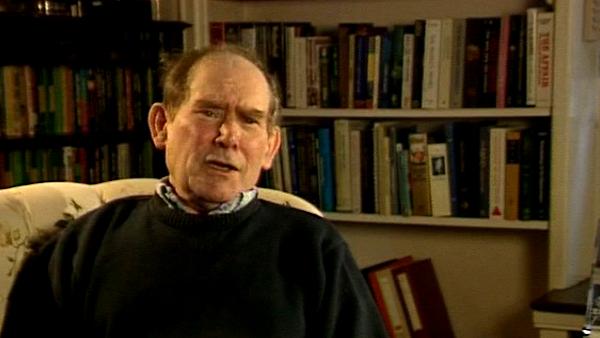NEXT STORY

Cultivating organisms and pervertebrates
RELATED STORIES

NEXT STORY

Cultivating organisms and pervertebrates
RELATED STORIES



As a model of polarity I… I played around in 1965 – this is very early – with caulobacter. In fact, I made some mutants of caulobacter. Caulobacter is a bacterium that has a very interesting life cycle which involves a polar… polar growth. That is, one side of the bacterium is different from the other. One side carries a stalk, to which the bacterium attaches, when it divides one of the daughters makes a flagellum and the other one… and… and then when that divides, one of its daughters makes a stalk again. So one has to… one has to say, 'How does this bacterium know which is its left side and which is its right side?' These caulobacters had been discovered by Roger Stanier, who I knew at Berkeley, and so I got some cultures from him and grew colonies and made some mutants; they were nutritional mutants. And the idea was: what can we make mutants to control this cycle and use bacteria as a model of differentiation? I also played around with a wonderful bacteria, which I think is called tetramitus. This little bacterium that grows in plates. I found it very difficult to grow. It grows as a square plate of… of… a square colony, one layer thick. It's a very interesting bacterium, because it means that successive divisions are polarised at right angles to each other. And we did grow some in the lab, and wondered whether this wouldn't be something to work on in order to see how was it that a plane of division in something like a bacterium could in successive divisions be rotated through 90 degrees.
South African Sydney Brenner (1927-2019) was awarded the Nobel Prize in Physiology or Medicine in 2002. His joint discovery of messenger RNA, and, in more recent years, his development of gene cloning, sequencing and manipulation techniques along with his work for the Human Genome Project have led to his standing as a pioneer in the field of genetics and molecular biology.
Title: "Caulobacter" and "tetramitus"
Listeners: Lewis Wolpert
Lewis Wolpert is Professor of Biology as Applied to Medicine in the Department of Anatomy and Developmental Biology of University College, London. His research interests are in the mechanisms involved in the development of the embryo. He was originally trained as a civil engineer in South Africa but changed to research in cell biology at King's College, London in 1955. He was made a Fellow of the Royal Society in 1980 and awarded the CBE in 1990. He was made a Fellow of the Royal Society of Literature in 1999. He has presented science on both radio and TV and for five years was Chairman of the Committee for the Public Understanding of Science.
Tags: 1965, Berkeley, Roger Stanier
Duration: 2 minutes, 28 seconds
Date story recorded: April-May 1994
Date story went live: 24 January 2008